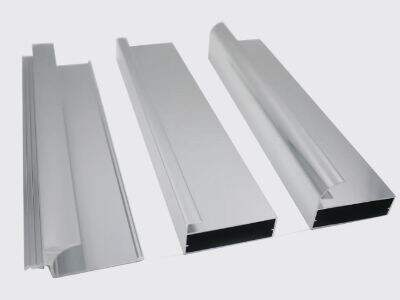Do you know what makes your favorite toy, in aluminum toys and bikes and some parts of home appliances beautiful. The answer is anodizing. One of these processes is called anodizing, a special process that makes metals such as aluminum stronger and last longer more resistant to rusting which occurs when the metal comes into contact with moisture (water) and starts to corrode.

Anodizing Process of Aluminum Profiles
So, how does anodizing work? The whole thing comes from the application of a specific layer on top of this aluminum ore. It is stronger with Aluminum Profile by Lenwa and prevents from being rusted. And it will allow us to add different colors into the aluminum, which we can make look super sweet.
Science behind anodizing and why it can be useful
Making all the miracles happen is done by, well anodizing which believe me it's a bit of witchcraft but almost 95% pure science with some interesting chemical reactions. The first are profiled aluminium which are very dirty and must be well cleaned in order to prepare them for anodizing. Cleaning: this is very crucial as any dirt or grease would alter the effectiveness of anodizing. In the next step, aluminum is dipped in a certain corrosion liquid called acid solution.
When aluminum is put in the solution an electric current is supplied, a process which combined react to provide you with that oxide layer on the surface of your aluminum. It is this layer that custom aluminum fabrication in Pismo Beach encases around the metal which makes it more durable and stronger. The process also causes a reaction that makes the oxide layer form, and this can be pigmented and coated to ensure its durability against rust over time. Anodization can also provide many benefits, including enhancing the look and surface wear-resistance as well (bright beautiful colors may offer a new way to liven up almost any item).
How to Anodize Aluminum: A Simple Guide
Clean the aluminum thoroughly. It cleans all dirt, grease and oil on its surface for better anodizing.
Etching This step is used to prepare the aluminum surface. It scrapes off any former layers of itself to roughen the upper surface. This makes the anodizing have a better “grip” on the material you will be using for your project.
Anodizing: This involves placing the cleaned aluminum in a bath containing an acid and linking it to a positive terminal. How Important is This Bath: Without this bath the oxide layer on aluminum alludes to be shaped.
Colouring: add some colour after anodizing. The aluminum is dipped in a dye bath that causes different pigments to be absorbed into the metal, creating bright colors. This is when the aluminum just starts to pop with beauty.
Sealing: Then the anodized layer is sealed. Sealing is important as it helps to protect the colors and also provides extra resistance against rust, wear thus keeping your aluminum looking good even after years.
Tricks for Anodizing Competitive Finish
Great attention to detail is required in order to achieve the best anodizing results. With some useful tips listed below:
Process Control: Make sure to monitor the whole anodizing process. Your voltage, current and temperature need to be controlled properly or you are simply never going to reach the insane levels of performance that some drivers are able achieve.
Factors for achieving the best finish, this includes picking the correct method to anodizing — there are a bunch of ways you can anodize aluminum and they all produce different looks. Choose the right one according to what you want your project done, then it will lead perfectly.
Maintenance: The anodization tools and their upkeep and may be a priority. Routine cleaning and checks of the machines will ensure everything is running properly and smoothly.
Troubleshooting Issues
Occasionally, anodizing aluminum cause a few issues however here are some things to get you through them.
Blow Holes: These are small bubbles that may occur on the surface of anodize film. You can solve this by cleaning surface really well before anodize start.
Peeling: Your oxide layer could also start peeling off your profile aluminium, this may be because that it was too hot during the anodizing. This can be avoided by carefully monitoring the voltage and current at all times.
Uneven Coloring: This occurs when the dye is not mixed properly causing an incomplete spread of color in the bath. This quality can be avoided by ensuring you have the correct infusion and concentrations in your dye bath, prior to coloring on aluminum.
Aluminium anodizing is a great way to make aluminium stronger, more resistant to rust and left looking good. Learning how anodizing works, the scientific fundamentals of it and techniques should allow you to get excellent results.

 EN
EN








































 ONLINE
ONLINE